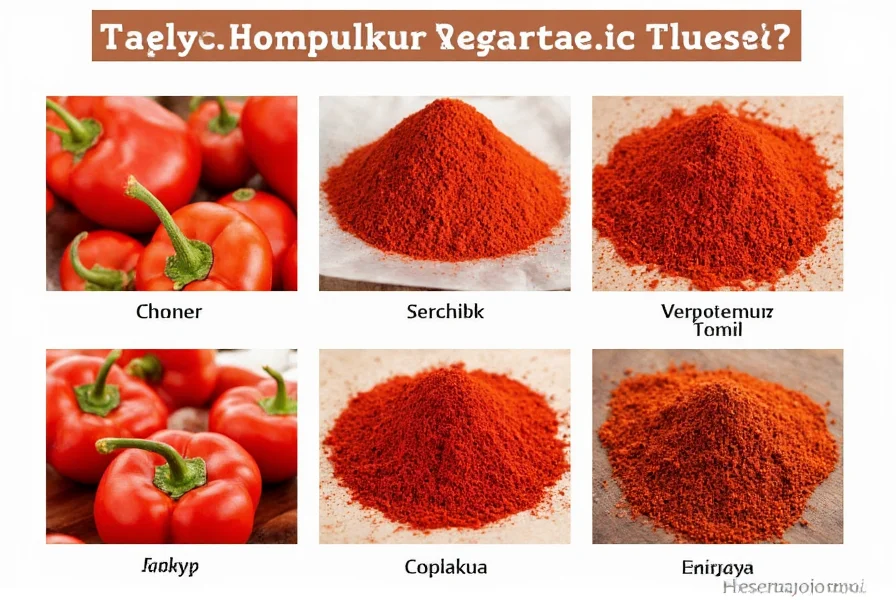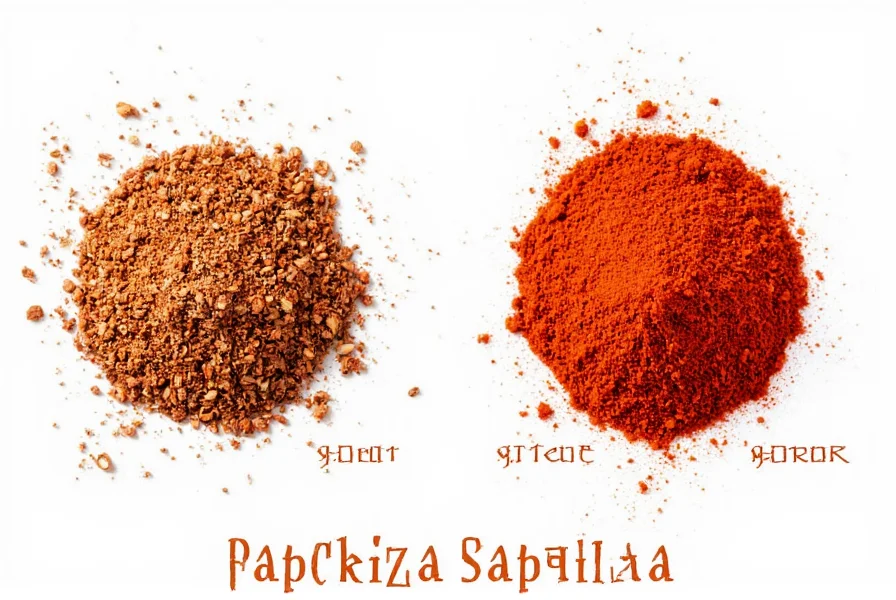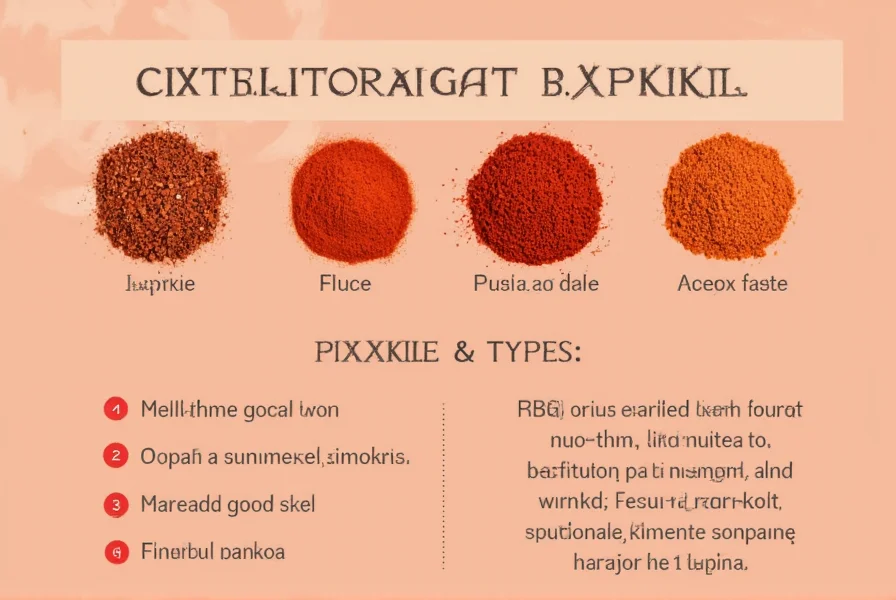Paprika isn't just "red pepper" as some believe—it's a sophisticated spice with distinct flavor dimensions that depend on its origin and processing method. Understanding these nuances helps home cooks and professional chefs alike harness its full culinary potential.
Understanding Paprika Varieties and Their Unique Taste Profiles
The flavor of paprika varies significantly based on where it's grown and how it's processed. The three primary varieties create completely different culinary experiences:
Sweet Paprika (Hungarian Style)
Sweet paprika, particularly the Hungarian variety, offers a mild, slightly sweet flavor with subtle earthy undertones and faint fruit notes. It lacks significant heat (0-100 SHU on the Scoville scale), making it perfect for dishes where color and gentle flavor matter more than spice. When properly ground, it provides a smooth, almost floral quality that enhances without overpowering.

Smoked Paprika (Pimentón from Spain)
Spanish smoked paprika, or pimentón, undergoes a traditional smoking process over oak wood for several days. This creates a complex flavor profile with deep smoky notes, subtle sweetness, and varying heat levels depending on the variety (dulce/sweet, agridulce/bittersweet, or picante/hot). The authentic smoking process gives it a distinctive campfire-like quality that can transform simple dishes into something extraordinary.
Hot Paprika
Hot paprika varieties contain more of the pepper's placenta and seeds, delivering noticeable heat (500-1,000 SHU) while maintaining the characteristic earthy-sweet base notes. Unlike cayenne pepper which is primarily heat, hot paprika offers a more rounded flavor experience with warmth that builds gradually rather than hitting immediately.
Breaking Down Paprika's Flavor Components
Understanding what does paprika taste like requires examining its multidimensional flavor profile:
- Primary Taste: Earthy sweetness with pepper undertones
- Aroma: Sweet paprika has a mild, almost floral scent; smoked varieties offer pronounced wood-smoke notes
- Mouthfeel: Smooth and fine when properly processed, without gritty texture
- Aftertaste: Sweet varieties leave a pleasant, lingering warmth; smoked versions maintain their distinctive smokiness
| Paprika Type | Flavor Profile | Heat Level | Best Culinary Uses |
|---|---|---|---|
| Hungarian Sweet | Earthy, mildly sweet, subtle fruit notes | Mild (0-100 SHU) | Goulash, deviled eggs, potato salad |
| Spanish Smoked (Dulce) | Deep smoky, sweet, complex wood notes | Mild (0-100 SHU) | Paella, roasted vegetables, tomato sauces |
| Hot Paprika | Earthy base with noticeable heat | Moderate (500-1,000 SHU) | Chili, spicy rubs, hearty stews |
How Paprika Compares to Similar Spices
Many people wonder what does paprika taste similar to, especially when comparing it to other common spices:
Paprika vs. Chili Powder: While both come from peppers, chili powder is typically a blend containing cumin, garlic powder, and other spices, giving it a more complex but less pure pepper flavor. Pure paprika offers a cleaner pepper taste without additional seasoning elements.
Paprika vs. Cayenne: Cayenne delivers straightforward heat with minimal flavor complexity (30,000-50,000 SHU), while even hot paprika provides a more rounded flavor experience at much lower heat levels.
Paprika vs. Red Pepper Flakes: Crushed red pepper offers sharper, more immediate heat with visible pepper fragments, whereas paprika provides smoother flavor integration and vibrant color without texture.
Culinary Applications Based on Flavor Profile
Knowing what flavor does paprika add to food helps determine the best applications:
Sweet Paprika: Ideal for dishes where color matters as much as flavor—think deviled eggs, potato salads, and creamy sauces. Its mild nature makes it perfect for finishing dishes without cooking, preserving its delicate flavor.
Smoked Paprika: Transforms simple ingredients through its distinctive smokiness. Add to tomato-based sauces, bean dishes, or rubs for meats. A pinch in mayonnaise creates an instant smoky aioli. Unlike liquid smoke, it provides authentic, nuanced smokiness without artificial aftertaste.
Hot Paprika: Best used in heartier dishes where its warmth can develop—stews, chili, and robust meat dishes. Unlike pure heat sources, it contributes both spice and flavor dimension.
Common Misconceptions About Paprika's Taste
Several myths persist about what does paprika taste like:
Myth: "All paprika is spicy."
Reality: Most traditional paprika varieties are mild to moderately spicy at most. The heat level varies dramatically by type and origin.
Myth: "Paprika is just for color."
Reality: While it does provide vibrant red hue, quality paprika contributes significant flavor dimension beyond mere coloring.
Myth: "Hungarian and Spanish paprika taste the same."
Reality: These represent completely different flavor profiles—Hungarian emphasizes sweet pepper notes while Spanish focuses on smokiness.
Maximizing Paprika's Flavor in Your Cooking
To get the most from what flavor does paprika add to your dishes:
- Storage matters: Keep paprika in an airtight container away from light and heat to preserve flavor compounds
- Bloom in oil: For sweet and smoked varieties, briefly cooking in oil (30 seconds) releases maximum flavor
- Add late for heat-sensitive dishes: In creamy sauces or delicate preparations, add toward the end of cooking
- Pair wisely: Complements tomatoes, potatoes, eggs, chicken, and beans exceptionally well

When Paprika Loses Its Flavor
Paprika's flavor compounds degrade over time. Properly stored, it maintains peak flavor for 6-12 months. Signs it's past prime include:
- Faded color (should be vibrant red)
- Weak aroma (should have distinctive scent when opened)
- Flat taste without characteristic sweetness or smokiness
Fresh paprika should have a pronounced aroma and deliver immediate flavor recognition—not just color without taste.
FAQ: Understanding Paprika's Taste
What does sweet paprika taste like compared to hot paprika?
Sweet paprika offers mild earthy sweetness with subtle fruit notes and virtually no heat, while hot paprika provides noticeable warmth (500-1,000 SHU) while maintaining the characteristic earthy base. Sweet varieties work in delicate dishes, while hot paprika adds both flavor and spice to heartier preparations.
Is smoked paprika spicy or just smoky?
Authentic Spanish smoked paprika (pimentón) comes in three varieties: dulce (sweet/mild), agridulce (bittersweet), and picante (spicy). The smoked flavor comes from traditional oak smoking, not heat. Dulce pimentón has deep smoky notes with no significant heat, making it ideal for adding smokiness without spice.
Why does my paprika taste bitter?
Bitter paprika usually indicates it's past its prime or was overheated during cooking. Paprika burns easily at high temperatures—always cook it gently in oil for no more than 30 seconds. Old paprika loses its sweet compounds first, leaving behind more bitter elements. Properly stored fresh paprika should never taste bitter.
What does paprika taste similar to?
Sweet paprika resembles mild bell pepper with earthy undertones, while smoked varieties taste similar to chipotle powder but with less heat and more complexity. Hot paprika shares some qualities with cayenne but is significantly milder and more flavorful. Unlike chili powder blends, pure paprika offers a cleaner, more focused pepper flavor without additional spices.
Can I substitute paprika for chili powder?
You can substitute paprika for chili powder in a 1:1 ratio, but the flavor profile will change significantly. Paprika provides pure pepper flavor without the cumin, garlic, and other spices in chili powder. For closer substitution, use 1 tablespoon paprika plus 1/2 teaspoon cumin and a pinch of garlic powder. Smoked paprika works especially well as a substitute when you want to add depth without additional spices.











 浙公网安备
33010002000092号
浙公网安备
33010002000092号 浙B2-20120091-4
浙B2-20120091-4